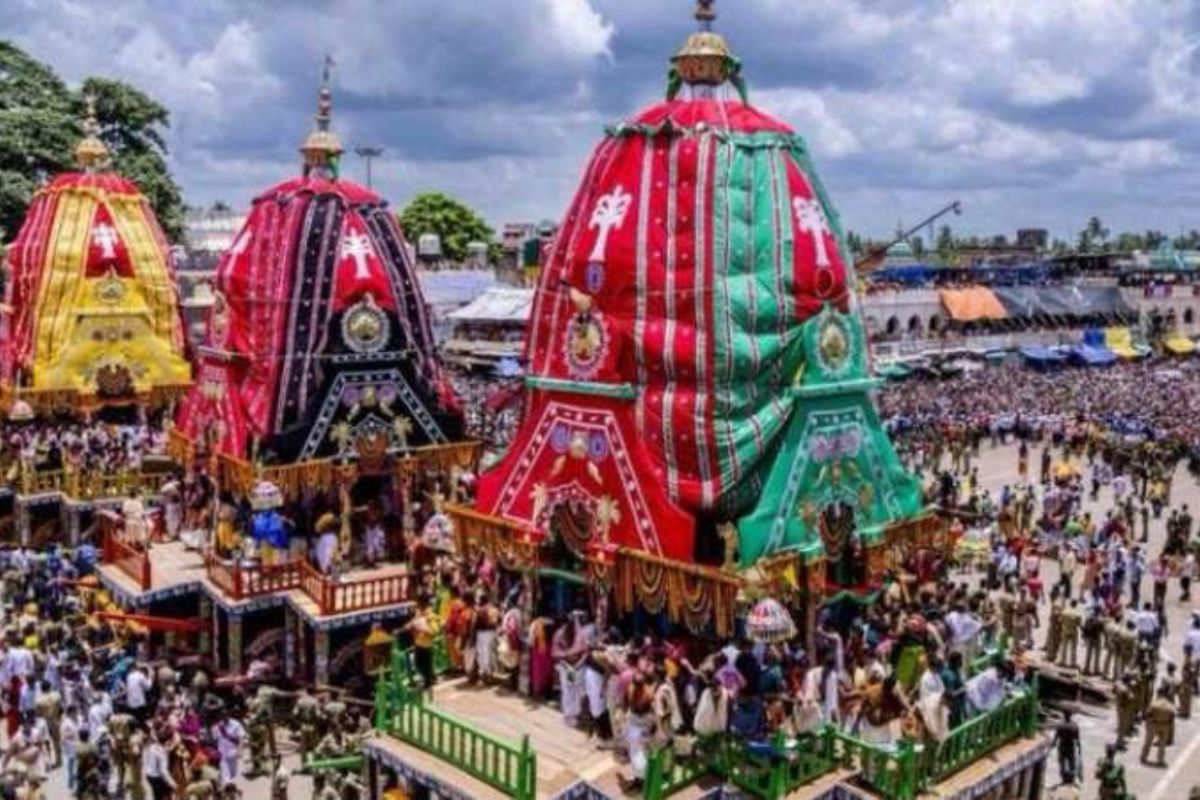Didi and the Deities, an astute politicians election strategy to counter BJP’s Hindutva
Ostensibly, it was an act of a devotee worshipping the deity. In fact, Banerjee has often said, “Religion is an individual choice.”
Several special rituals were performed before the deities were taken out of the Gundicha temple and placed on the three colourfully decorated chariots for the return journey amid chants of ‘Jai Jagannath’ and ‘Hari Bol.’

Rath Yatra
Lakhs of devotees from across the country and abroad thronged the grand road at Puri on Wednesday to witness Lord Jagannath’s ‘Bahuda Yatra’ (Return Car Festival).
A multi-layer security net was thrown in the town with heavy deployment of forces to ensure smooth celebrations and prevent any untoward incident, a senior police official said.
According to mythology, the three deities – Lord Jagannath, his elder brother Lord Balabhadra and their sister Devi Subhadra wrap up their annual nine-day sojourn to Sri Gundicha Temple, their birth place and return to Sreemandir or Sri Jagannath temple riding their three majestic wooden chariots.
Advertisement
Several special rituals were performed before the deities were taken out of the Gundicha temple and placed on the three colourfully decorated chariots for the return journey amid chants of ‘Jai Jagannath’ and ‘Hari Bol.’
The divine siblings were taken to their chariots in an elaborate ritual called ‘Pahandi’ to the beating of gongs, cymbals and blowing of conch shells.
Lord Jagannath was ensconced in the largest of the three chariots – the 45 feet-high ‘Nandighosh’, Balabhadra in his 44 feet-high ‘Taladhwaja’ and Subhadra in her 43 feet-high ‘Darpadalan’.
Gajapati King of Puri Divya Singha Deb performed the ‘Chhera Pahanra’ ritual. He offered prayers to the deities and then swept the platforms of the chariots with a golden broom and sprinkled flowers and fragrant water.
The deities, who had embarked on a nine-day sojourn to the Gundicha Temple during Rath Yatra, would finally re-enter the 12th century shrine and again be placed on the ‘Ratna Simhasana’, the bejewelled throne, following a ceremony called ‘Neeladribije’.
Ahead of ‘Neeladribije,’ the deities would be decorated with ‘suna besha’ or golden attire on their chariots, which traditionally attracts a large number of devotees from all over.
Advertisement